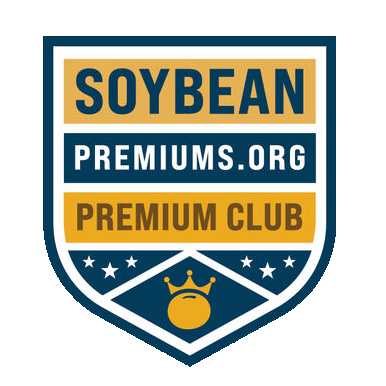Copyright © 2019 SoybeanPremiums.org All Rights Reserved
Farmer Resources
Programs
Find a Premium Program nearest you today. Start by choosing your desired state to filter the Premium Soybean Programs.
This program information is provided by the companies listed here. ISA does not independently verify or vouch for the accuracy of this information. Questions about a program should be directed to the company rather than ISA.
This program information is provided by the companies listed here. ISA does not independently verify or vouch for the accuracy of this information. Questions about a program should be directed to the company rather than ISA.
High Hopes for High Oleic
If you’re thinking about dipping your toes into the specialty soybean market to earn premiums, high oleic soybean production may be one path you want to explore.
The United Soybean Board (USB) has been investing checkoff dollars into the research and development of this market for the last 10 years or so, with the objective of creating high oleic soybean varieties that will meet the needs of both farmers and customers.
So, what are high oleic soybeans, and who wants to buy them?
When the Food & Drug Administration mandated that trans fats needed to be listed on food labels beginning in 2003, soybean farmers lost some of their cooking oil market. Soybean oil creates trans fats under some applications. So, researchers went to work to see how to solve that problem and keep soybean oil in the demand mix. High oleic soybeans were the solution.
High oleic soybeans produce oil with no trans fats, 20 percent less saturated fat and have properties that help the oil last longer on the shelf and in the fryer.
USB reports high oleic soybean oil withstands most high-heat situations. For example, fast food restaurants can use it to fry foods without worrying about the oil breaking down and creating an altered taste. And adding high oleic oil to your favorite snacks allows those food companies to add shelf life to the products. In addition, high oleic oil provides industrial users with an oil that can add demand for soybeans in markets such as synthetic motor oils and automotive lubricants.
So, the demand is already out there. Why should soybean farmers grow them?
First and foremost, farmers already growing high oleic soybeans report that the harvested yields they get are on par with the traditional commercial varieties they grow.
High oleic soybeans are bred with the same agronomic trait and disease packages already in use by farmers around the country, so you don’t have to choose between growing top-performing traditional varieties and providing a product food and industrial customers want. You can add profitability and innovation to your operation at the same time.
Many processors offer high oleic soybean premiums. The premium is made available because the oil has a higher value than traditional soybean oil. Premiums are based on what the end user will pay. And even if you don’t find the elevator closest to you in the high oleic program, the premium could help cover delivery costs to another nearby elevator or processor that does accept them. Plus, the only real management change is keeping the soybeans segregated after harvest.
High oleic soybeans offer U.S. farmers an opportunity to gain nine billion pounds of value-added soybean oil demand from food, industrial and export customers. Because there is a market for both commodity soybeans and high oleic soybeans, all farmers benefit from greater demand.
Contact your local seed supplier, elevator or processor to see if high oleic soybean varieties are available in your area, or visit www.soyinnovation.com for more information. Farmers in parts of the Midwest and East especially may find high oleic varieties to grow. You can also explore the contract offerings available on this website to join the premium club. SoybeanPremiums.org is your go-to resource for insights and opportunities you can’t access anywhere else.
By accepting you will be accessing a service provided by a third-party external to https://soybeanpremiums.org/
